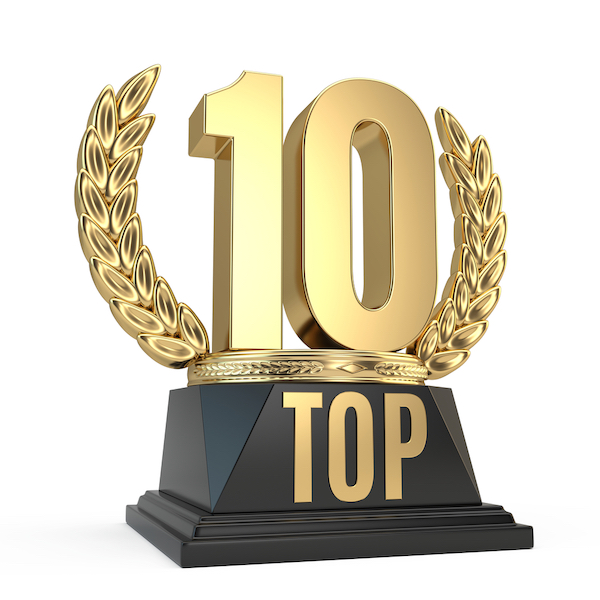 The patents granted by the U.S. Patent and Trademark Office (USPTO) tell the story of society’s innovative future. While the true value of a technological advance develops over time, the top 10 patents granted in 2023 represent meaningful advances in several emerging areas of technology. From artificial intelligence (AI) systems for retail checkout to improved mRNA drug delivery, these innovations have been chosen for their likeliness to make a significant real-world impact in 2024 and beyond.
The patents granted by the U.S. Patent and Trademark Office (USPTO) tell the story of society’s innovative future. While the true value of a technological advance develops over time, the top 10 patents granted in 2023 represent meaningful advances in several emerging areas of technology. From artificial intelligence (AI) systems for retail checkout to improved mRNA drug delivery, these innovations have been chosen for their likeliness to make a significant real-world impact in 2024 and beyond.
#1: U.S. Patent No. 11651664, Neural Network Classifier Trained for Purchasing Differentiation
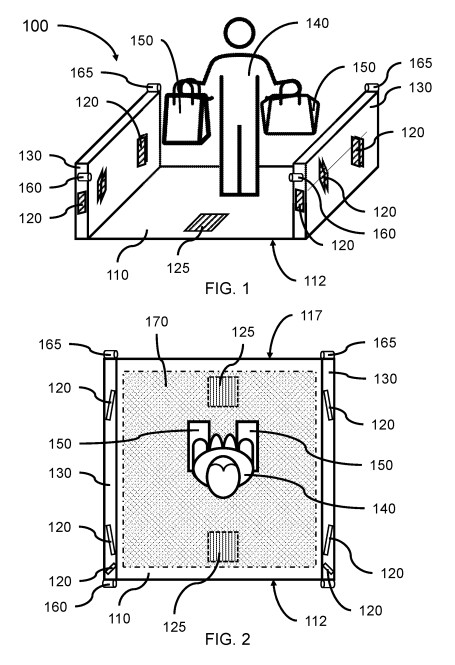 This year’s top patent covers an application of neural networks which are utilized in machine learning environments in a way that could completely change the self-checkout experience in any retail environment. The ‘664 patent was issued to American R&D company NEC Laboratories in May. It claims a system for self-checkout at a point-of-sale including, among other elements, a multi-layer neural network classifier that determines if radio frequency identification (RFID) tags are inside a checkout area bounded by entrance sensors. The classifier is trained to both reduce customer dissatisfaction caused by incorrectly identified items and minimize vendor loss created by the value of items taken from the store without being purchased.
This year’s top patent covers an application of neural networks which are utilized in machine learning environments in a way that could completely change the self-checkout experience in any retail environment. The ‘664 patent was issued to American R&D company NEC Laboratories in May. It claims a system for self-checkout at a point-of-sale including, among other elements, a multi-layer neural network classifier that determines if radio frequency identification (RFID) tags are inside a checkout area bounded by entrance sensors. The classifier is trained to both reduce customer dissatisfaction caused by incorrectly identified items and minimize vendor loss created by the value of items taken from the store without being purchased.
The uncertain state of subject matter eligibility in U.S. patent law has raised questions as to whether AI can be patented under current judicial interpretations of 35 U.S.C. § 101. However, the UK High Court of Justice entered a ruling in late November opening the door toward patentability for AI systems, specifically a neural network with self-training elements like the system claimed in the ‘664 patent.
#2: U.S. Patent No. 11773407, CRISPR Logic Units for Safer and Controllable Gene Therapies
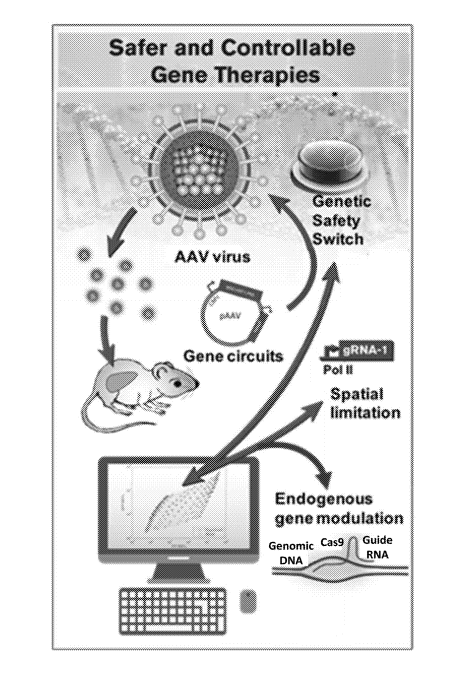 The second-ranked patent on this list is the first of three top 10 patents for 2023 that have been issued to U.S. public research universities. Issued in October to Arizona State University, the ‘407 patent claims a synthetic regulatory system for modulating transcription in vivo using at least two guide ribonucleic acids (RNA) configured to target distinct nucleotide sequences. The nucleotide sequences are separated into distinct viral vectors, and the guide RNA are both complementary and have different nucleotide lengths.
The second-ranked patent on this list is the first of three top 10 patents for 2023 that have been issued to U.S. public research universities. Issued in October to Arizona State University, the ‘407 patent claims a synthetic regulatory system for modulating transcription in vivo using at least two guide ribonucleic acids (RNA) configured to target distinct nucleotide sequences. The nucleotide sequences are separated into distinct viral vectors, and the guide RNA are both complementary and have different nucleotide lengths.
The written description of the ‘407 patent notes that, despite research into gene editing via clustered regularly interspaced short palindromic repeats (CRISPR), clinical applications are still limited because CRISPR editing techniques are difficult to control. In early December, the U.S. Food and Drug Administration approved the first CRISPR-based treatment for sickle cell disease. Arizona State University’s technology could improve the pace at which other life-saving genetic therapies are approved for consumers in America and elsewhere.
#3: U.S. Patent No. 11657196, Incremental Generation of Quantum Circuits
 International Business Machines (IBM) continues to be one of the most prolific patenting entities in the U.S. innovation ecosystem. Issued to IBM in May, the ‘196 patent claims a method of detecting a set of logic gates within quantum circuits, determining that structural equality between quantum circuits, and then parameterizing logic gates according to the structural equality of their circuits. According to the written description, embodiments of the claimed invention are designed to address problems in quantum circuit compilation caused by the physical limitations of quantum computers. Quantum computing technologies continue to be politically important, as evidenced by a recent joint declaration by EU leaders calling for coordinated action on supporting quantum research across Europe.
International Business Machines (IBM) continues to be one of the most prolific patenting entities in the U.S. innovation ecosystem. Issued to IBM in May, the ‘196 patent claims a method of detecting a set of logic gates within quantum circuits, determining that structural equality between quantum circuits, and then parameterizing logic gates according to the structural equality of their circuits. According to the written description, embodiments of the claimed invention are designed to address problems in quantum circuit compilation caused by the physical limitations of quantum computers. Quantum computing technologies continue to be politically important, as evidenced by a recent joint declaration by EU leaders calling for coordinated action on supporting quantum research across Europe.
#4: U.S. Patent No. 11773542, Piezoelectric-based Asphalt Layer for Energy Harvesting Roadway
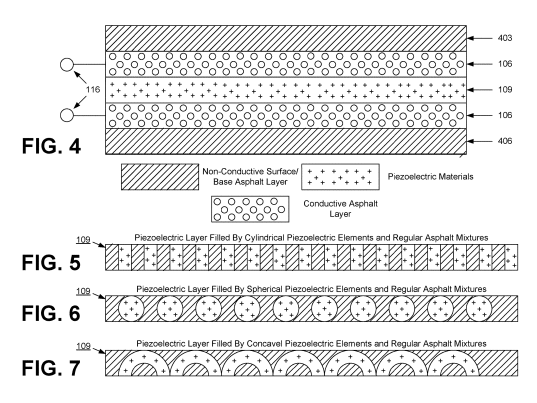 Anyone who grew up playing the futuristic racing video game series F Zero will thrill slightly at the technology covered by the ‘542 patent, issued in October to the University of South Florida (USF). The patent claims a technology that makes use of piezoelectricity, which converts mechanical stresses on materials into electricity. The energy harvesting roadway claimed by the ‘542 patent includes a plurality of road segments, each segment having an asphalt layer with rigid piezoelectric elements sandwiched between conductive asphalt layers. USF’s piezoelectric technology seeks to recapture much of the energy wasted by cars driving on roads, which creates both heat and friction.
Anyone who grew up playing the futuristic racing video game series F Zero will thrill slightly at the technology covered by the ‘542 patent, issued in October to the University of South Florida (USF). The patent claims a technology that makes use of piezoelectricity, which converts mechanical stresses on materials into electricity. The energy harvesting roadway claimed by the ‘542 patent includes a plurality of road segments, each segment having an asphalt layer with rigid piezoelectric elements sandwiched between conductive asphalt layers. USF’s piezoelectric technology seeks to recapture much of the energy wasted by cars driving on roads, which creates both heat and friction.
#5: U.S. Patent No. 11596645, Delivery of RNA to Trigger Multiple Immune Pathways
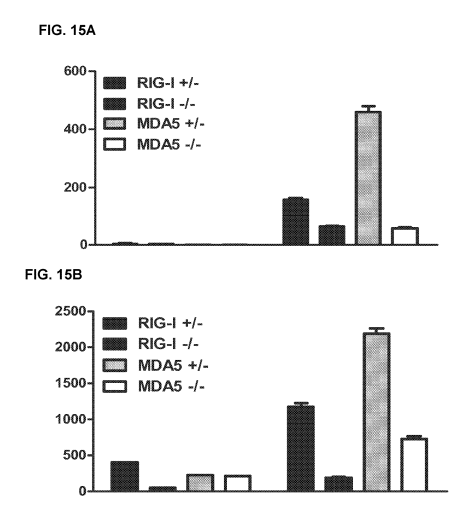 Novel medical treatments involving the use of messenger RNA (mRNA) have captured the respect of the medical industry thanks in large part to mRNA vaccines developed to combat COVID-19. Earlier this year, Hungarian-American biochemist Katalin Karikó, who sacrificed career prospects during the 1990s to focus on solving issues in mRNA drug delivery, was one of two inventors receiving the 2023 Nobel Prize in Physiology or Medicine for contributions to mRNA vaccines. The ‘645 patent, issued to GlaxoSmithKline in March, claims a composition including lipid particles and mRNA molecules comprising an immunogen producing a local adjuvant effect in a way that increases immune response by inducing RIG-I-like receptor-mediated (RLR) signaling in non-immune cells.
Novel medical treatments involving the use of messenger RNA (mRNA) have captured the respect of the medical industry thanks in large part to mRNA vaccines developed to combat COVID-19. Earlier this year, Hungarian-American biochemist Katalin Karikó, who sacrificed career prospects during the 1990s to focus on solving issues in mRNA drug delivery, was one of two inventors receiving the 2023 Nobel Prize in Physiology or Medicine for contributions to mRNA vaccines. The ‘645 patent, issued to GlaxoSmithKline in March, claims a composition including lipid particles and mRNA molecules comprising an immunogen producing a local adjuvant effect in a way that increases immune response by inducing RIG-I-like receptor-mediated (RLR) signaling in non-immune cells.
#6: U.S. Patent No. 11824732, Techniques for Artificial Intelligence Capabilities at a Network Switch
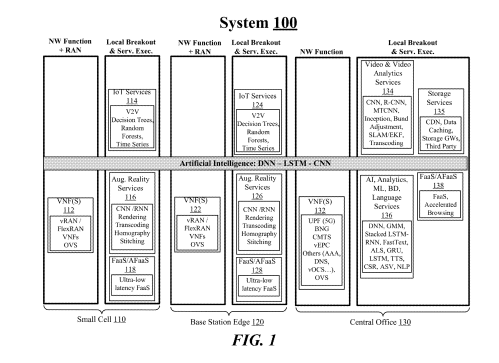 The ‘732 patent, issued to Intel Corporation in November, protects another AI advance that arguably addresses some of the Section 101 issues surrounding computing technologies. Directed at a seeming technological improvement to computer architecture, it claims a method of employing AI capabilities at a network switch that addresses a growing need for deep learning infrastructure that are closer to sources of input data contained within a cloud-based network.
The ‘732 patent, issued to Intel Corporation in November, protects another AI advance that arguably addresses some of the Section 101 issues surrounding computing technologies. Directed at a seeming technological improvement to computer architecture, it claims a method of employing AI capabilities at a network switch that addresses a growing need for deep learning infrastructure that are closer to sources of input data contained within a cloud-based network.
#7: U.S. Patent No. 11602281, Injectable Sensors and Methods of Use
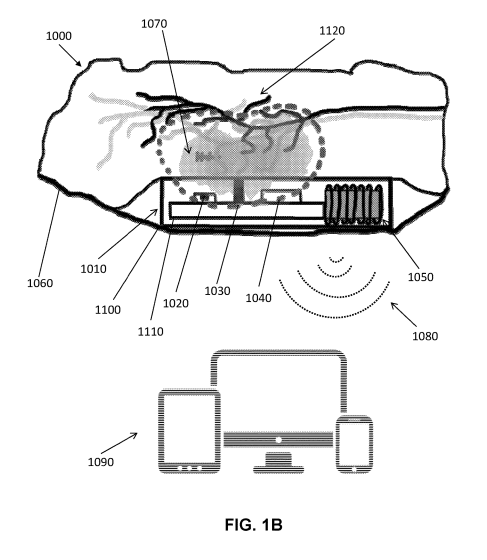 Issued to North Carolina State University in March, the ‘281 patent claims a subcutaneously injectable biophotonic sensor having a printed circuit board (PCB) and optical sensing elements that are wirelessly powered for remote monitoring of physiological parameters in a subject. The written description mentions embodiments useful in clinical settings and for wildlife monitoring.
Issued to North Carolina State University in March, the ‘281 patent claims a subcutaneously injectable biophotonic sensor having a printed circuit board (PCB) and optical sensing elements that are wirelessly powered for remote monitoring of physiological parameters in a subject. The written description mentions embodiments useful in clinical settings and for wildlife monitoring.
#8: U.S. Patent No. 11611947, Method and EU for Handling Mobility Procedure for UE
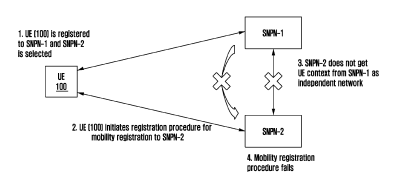 Samsung Electronics, which was issued the most U.S. patents during 2022, was granted the ‘947 patent in March. It claims a method performed by a terminal in a mobile system that supports higher data rates beyond 4th-generation (4G) Long Term Evolution (LTE) communications systems. The innovation is designed to address current technological shortcomings that make it difficult for unauthorized user equipment (UE) to communicate with standalone non-public networks (SNPN) that don’t interact with mobile service providers.
Samsung Electronics, which was issued the most U.S. patents during 2022, was granted the ‘947 patent in March. It claims a method performed by a terminal in a mobile system that supports higher data rates beyond 4th-generation (4G) Long Term Evolution (LTE) communications systems. The innovation is designed to address current technological shortcomings that make it difficult for unauthorized user equipment (UE) to communicate with standalone non-public networks (SNPN) that don’t interact with mobile service providers.
#9: U.S. Patent No. 11628022, Collision Handling Algorithms for Robotic Surgical Systems
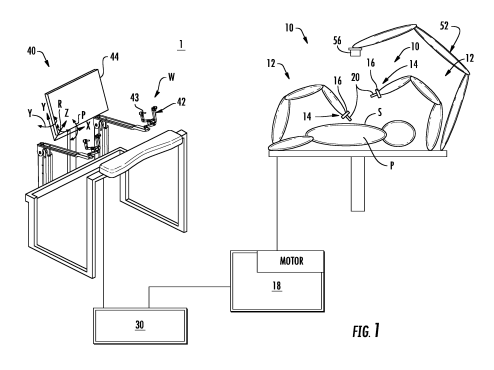 Issued to Covidien in April, the ‘022 patent claims a method for collision handling for robotic surgical systems by which an input handle of a user interface is slipped relative to the pose of a tool when the robot collides with an obstruction, and then slipped again when the robot reaches a predetermined force threshold. The claimed input handle has an offset relative to the tool’s desired pose that allows the obstructed robotic arm or effector to move around patient organs or other surgical equipment.
Issued to Covidien in April, the ‘022 patent claims a method for collision handling for robotic surgical systems by which an input handle of a user interface is slipped relative to the pose of a tool when the robot collides with an obstruction, and then slipped again when the robot reaches a predetermined force threshold. The claimed input handle has an offset relative to the tool’s desired pose that allows the obstructed robotic arm or effector to move around patient organs or other surgical equipment.
#10: U.S. Patent No. 11552964, Detecting Man-in-the-Middle Attacks in Adaptive Streaming
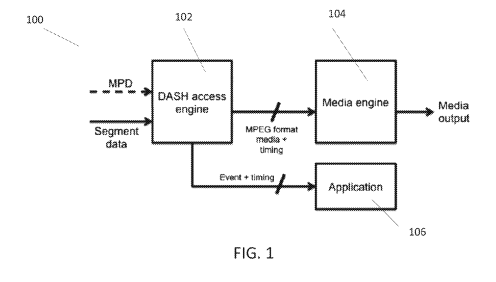 Issued in January 2022 to Wilmington, DE-based Vid Scale, the ‘964 patent claims a method for streaming video content that prevents malicious actors from inserting unauthorized media into content streams in ways that prevent servers from identifying the cyber attack. The steps of the method involves a content authenticity XML element used to compute an authentication hash that is compared to a server-provided hash to detect mismatches.
Issued in January 2022 to Wilmington, DE-based Vid Scale, the ‘964 patent claims a method for streaming video content that prevents malicious actors from inserting unauthorized media into content streams in ways that prevent servers from identifying the cyber attack. The steps of the method involves a content authenticity XML element used to compute an authentication hash that is compared to a server-provided hash to detect mismatches.
Image Source: Deposit Photos
Author: Sashkin7
Image ID: 113585834

![[IPWatchdog Logo]](https://ipwatchdog.com/wp-content/themes/IPWatchdog%20-%202023/assets/images/temp/logo-small@2x.png)

![[Advertisement]](https://ipwatchdog.com/wp-content/uploads/2024/04/UnitedLex-May-2-2024-sidebar-700x500-1.jpg)
![[Advertisement]](https://ipwatchdog.com/wp-content/uploads/2024/04/Artificial-Intelligence-2024-REPLAY-sidebar-700x500-corrected.jpg)
![[Advertisement]](https://ipwatchdog.com/wp-content/uploads/2024/04/Patent-Litigation-Masters-2024-sidebar-700x500-1.jpg)

![[Advertisement]](https://ipwatchdog.com/wp-content/uploads/2021/12/WEBINAR-336-x-280-px.png)
![[Advertisement]](https://ipwatchdog.com/wp-content/uploads/2021/12/2021-Patent-Practice-on-Demand-recorded-Feb-2021-336-x-280.jpg)
![[Advertisement]](https://ipwatchdog.com/wp-content/uploads/2021/12/Ad-4-The-Invent-Patent-System™.png)






Join the Discussion
3 comments so far.
F22strike
December 23, 2023 10:42 amThis is a correction to my last email. The second sentence of the third paragraph should read:
If the invention were truly valuable, the patent claiming it would likely be subjected to many successive IPRs until all of its infringed claims were cancelled.
F22strike
December 22, 2023 02:16 pmWho selected these patents? Is this just some PR stunt by the USPTO?
Given the sad state of US patent law, would a complaint for infringement of any of these patents survive a motion to dismiss based on 35 USC Section 101? The drafter of the application that resulted in Patent #9 placed a big bullseye on that patent by using ALGORITHMS in the title of the invention.
Even if one of these patents survived a 101 motion, could it survive an IPR? If the patent were truly valuable, it would likely be subjected to many successive IPRs until all of its potentially infringed claims were cancelled. The owner of the patent would waste tens of millions in legal fees and endure years of distraction and disappointment.
News alert – US patents are typically worthless, except in very special circumstances.
Pro Say
December 21, 2023 07:55 pmWith the top two U.S. courts for crippling U.S. innovations being SCOTUS and CAFC (in no particular order).
I know. I know. Too easy. Just too easy.
Happy New Year to U.S.